| Name | Bone File – Double-Ended |
| Lead Time | Lead time advised within 48 hours of order placement. |
| Specialty | Neuro, Ortho & Spine-Rasps & Files |
| Material Finish | Stainless Steel |
| Grade | Premium Operating Room |
| Units of Measurement | Each |
| Manufacturer | Lexis Industry |
| Sterility | Non-Sterile |
| Usage | Reusable |
Bone File – Double-Ended
double-ended, cross-cut, 7″ (18.0 cm)?Bone File is a highly versatile instrument that can be used in a vast array of surgical procedures. This file is double ended and is cross cut. The small paddle style blades allow it to be used near delicate tissue areas as are common in neurosurgical procedures and not cause trauma or injury by puncture wound. Additionally use of this file on jagged bone breaks or cuts or even on rough hard surfaces aids in the protected of neurovascular bundles and other tissue layers that are mobilized during surgery that can easily be torn or injured.
217
People watching this product now!
SKU:
EI-01-1238
Category: Rasps & Files
Description
Reviews (0)
Be the first to review “Bone File – Double-Ended” Cancel reply
Related products
Putti Bone Rasp – Round Blades
round blades, double-ended, 1 10.0 mm round blade tapers to 4.0 mm & 1 15.0 mm half-round blade tapers to 5.0 mm, 12" (30.5 cm)?Putti Bone Rasp is an instrument ideally suited for use in surgeries that require handling and particularly mild reshaping of bone such as in neurosurgical or orthopedic surgeries. . This instrument is double ended and features one round blade and another half round. The unique design of this rasp is in the leap shaped silhouette that tapers from 11.0 mm to 4.0 mm for the round blade and from 15.0 mm to 5.0 for the half round that allows it to be fit into slim and narrow spaces and effectively whittle down bone or hard tissue from any angle.
Bone File #12Ca
double-ended, bell pattern, cross serrations, 5.0 mm & 7.0 mm wide ends, 7" (17.5 cm)?Bone File #12CA is designed for use in manipulation of bone. This particular file is designed in a bell pattern and is double-ended making it a versatile instrument that can be useful in a vast array of settings. One end is 5.0 mm while the other is 7.0 mm and both features cross serrations. This file can be useful in doing this such as filing down bone when doing grafting procedures or simply to reduce the jaggedness of bone and other hard protuberances that may cause trauma to surrounding soft tissue layers of vasculature.
Bone File #92B
single-ended, 2.0 mm wide, file inside, backward cutting, angled w/ serrations, 6" (15.0 cm)?Bone File is a highly versatile instrument that can be used in almost any neurosurgical orthopedic procedures. Ranging from craniotomies to spinal surgery this file can be used to file down any types of bone. This can be useful in smoothing down rough edges to prevent catching or tearing of delicate tissues or vasculature during surgical intervention. This instrument is single-ended with the file inside and is angled with serrations and can be used in backward cutting.
Bone File #92A
single-ended, 2.0 mm wide, file outside, backward cutting, angled w/ serrations, 6" (15.0 cm)?Bone File is a highly versatile instrument that can be used in almost any neurosurgical orthopedic procedures. Ranging from craniotomies to spinal surgery this file can be used to file down any types of bone. This can be useful in smoothing down rough edges to prevent catching or tearing of delicate tissues or vasculature during surgical intervention. This instrument is single-ended with the file outside and is angled with serrations and can be used in backward cutting.
Bone File – Single-Ended
single-ended, 2-sided convex & flat blade, 23.0 mm width tapers to 6.0 mm, 11" (28.0 cm)?Bone File is a ideally suited for many different surgical procedures. It is specifically designed to be used to file away at bone fragments that are caused by breaks or cuts or on coarse hard tissues in different parts of the body. They can be especially useful in neurosurgical and orthopedic procedures that can involve maneuvering and exploring around many different bony areas such as the skull, long bones and vertebral column. Additionally this file is single sided with a convex and flat blade and a 23.0 mm width that tapers to 6.0 mm.
Bone File #64
double-ended, plain serrations, 3.0 mm & 4.0 mm wide, 7" (17.5 cm)?Bone File #64 is a double ended instrument that can be used in a variety of surgical procedures. This file features plain serrations and can be used to smooth out sharp edges on bone during surgery. In surgeries where such delicate tissue is involved such as nerves, vessels or even brain tissue it is imperative to keep sharp surfaces from causing tear injuries. Additionally this instrument is comprised of premium German operating-room grade stainless steel.
Bone File #12A
double-ended, one end plain, other end cross serrated, 5.0 mm wide ends, 7" (17.5 cm)?Bone File #12A is a highly versatile file that can be used in surgical procedures that require manipulation of bone. It is ideally suit for some forms of bone reshaping such as a jagged edge that could endanger the tissue areas around it. In procedures such as craniotomies in which delicate brain tissue is being handled this file aids in keeping the bony area around smooth and free of harmful points. Additionally this instrument is double ended with one end plain and the other cross serrated making it a multi functional file.
Polokoff Rasp
Polokoff Rasp is a highly versatile instrument that is ideal for use in neurosurgical or orthopedic surgical procedures that require manipulation of bone. This rasp can be used to reshape bone slightly to prevent snagging of delicate tissue layers of vasculature. Additionally it can be used to hollow out bone to aid in insertion of implants. This rasp is double-ended and available in two sizes either 3.0 mm and 4.0 mm ends or two 6.0 mm ends making it suitable for a vast majority of patient cases.

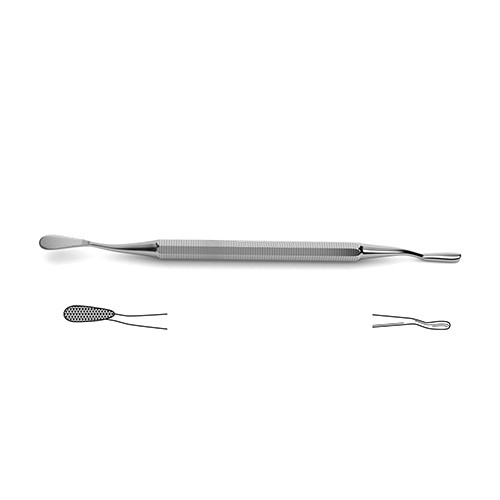
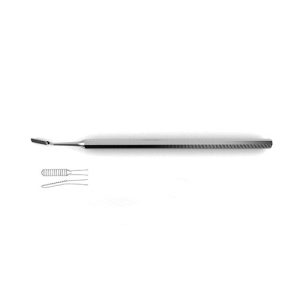
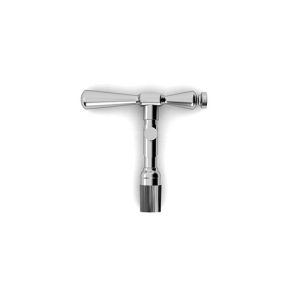
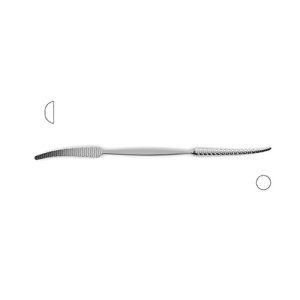
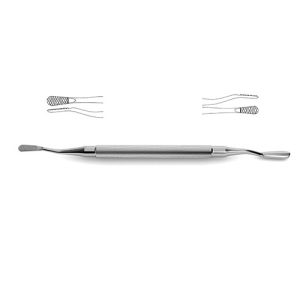
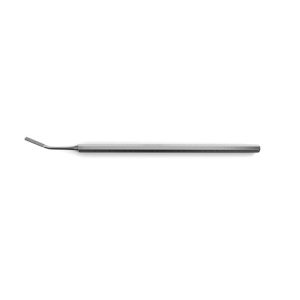
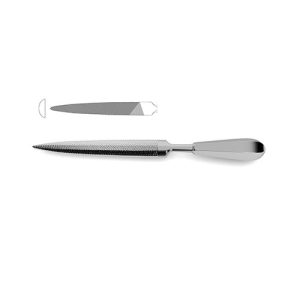

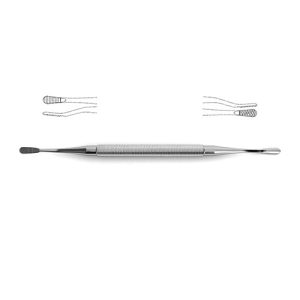
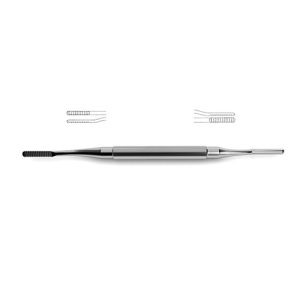


Reviews
There are no reviews yet.